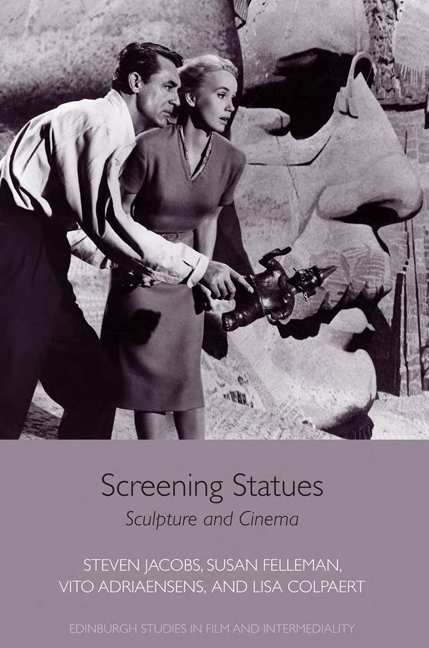Introduction: The Marble Camera
Published online by Cambridge University Press: 23 June 2018
Summary
I desire in moving pictures, not the stillness, but the majesty of sculpture. I do not advocate for the photoplay the mood of the Venus of Milo. But let us turn to that sister of hers, the great Victory of Samothrace, that spreads her wings at the head of the steps of the Louvre.
Vachel Lindsay, The Art of the Moving Picture (1915)Brutal and positive like nature, sculpture is at the same time vague and eludes one's grasp, because it presents too many sides at once.
Charles Baudelaire, Why Sculpture Is Boring (1846)Looking at Sculptures
According to Rudolf Arnheim, “much sculpture lacks the essential quality of life, namely, motion.” This is why, no doubt, marble statues and plaster casts played such an important role in the works of early photographers of the late 1830s and 1840s, who had to cope with long exposure times. Given this perspective, what can be said about the relation between sculpture and film, a medium often first and foremost characterized by motion? This book deals with a wide range of magical, mystical, cultural, historical, formal, and phenomenological interactions between the two media. Apart from the contrast between stillness and movement, sculpture and film can be seen as opposites in other ways. Whereas sculpture is an artistic practice that involves not only static but also material, three-dimensional, and durable objects, the cinema produces kinetic, immaterial, two-dimensional, and volatile images. However, the history of cinema amply illustrates the attraction of these opposites. Sculpture and film were made for each other, so to speak. Apart from the fact that sculpture – much more than painting – has always been an art of reproduction (i.e. is often cast), it is often seen as an art that invites movement as shifting positions of the viewer in space are necessary to see and experience it in the round. This was also the rationale for the filmmakers around the period of the First World War who made travelogues showing monuments and public sculptures that could be considered the earliest films focusing on artworks. Having the advantage that they could be filmed in natural light and were often monochromatic, such subjects lent themselves to early cinema better than paintings.
- Type
- Chapter
- Information
- Screening StatuesSculpture and Cinema, pp. 1 - 26Publisher: Edinburgh University PressPrint publication year: 2017



